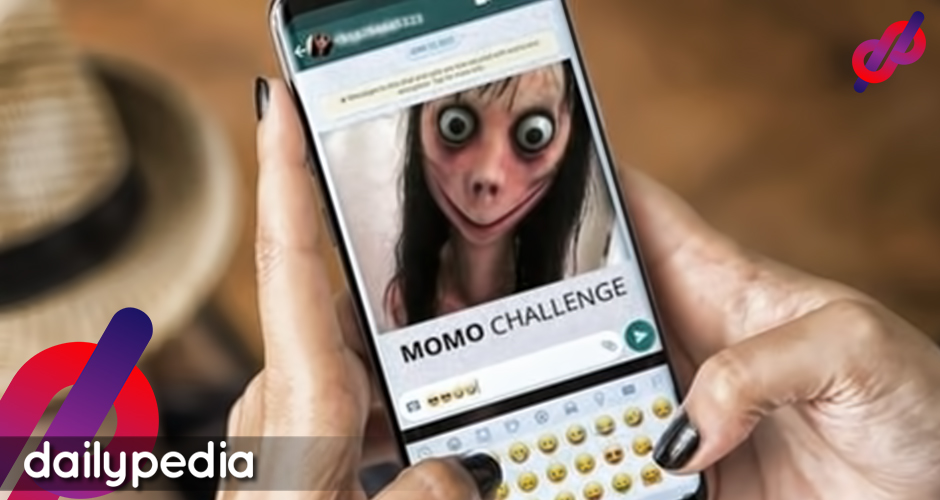- Momo Challenge is one of the top trending searches on the Internet; it also alarms all over the world due to the report of death by the said challenge.
- Experts say that it is probably not something to worry about the information to everyone, there’s almost no evidence to prove it’s a real thing.
- Experts think that it is possible that anyone can post pretty much anything to YouTube at any given time, so it’s impossible that there aren’t creepy videos floating around that display harmful contents.
Momo Challenge was is one of the top trending searches on the Internet that also alarmed people around the world due to reports of death by the said challenge. Others said that there was no strong evidence that it seriously harmful for children.

Jim Waterson, a media editor at the Guardian, stated that Momo challenge that caused some parents of having moral panic was because of news that the press released an item when there was no evidence that it could seriously harm children.
“The coverage of the Momo challenge is possibly some of most irresponsible journalism in this country for ages. Samaritans say they’ve got no evidence of serious harm to children but the press coverage could now be putting vulnerable people at risk.”
https://twitter.com/jimwaterson/status/1101019495471079424?fbclid=IwAR3GCPqIihgL3_f5PAhl47C6Q6zy5a511WMsMD63vTMXLzSwBbzR6SzIvGg
He also specified the effects of the news. It scared the people and it continued to spread among school and to the police by reading stories about the challenge.
Then it followed by a warning for the people on issues about more stories repeatedly quoting of 130 Russian deaths from a previous hoax then it followed by a Fake YouTube claims to the source to the primary school which made the kids so scared.
https://twitter.com/jimwaterson/status/1101020566025355269
Because of the trust, people rely on the information coming from the local schools and police force that they are aware of the information. It came from the Internet but then they were just sending letters to parents warning of non-existing issues that YouTube video are also being “hacked”.
“A lot of this relies on people believing their local school or police force knows what they’re talking about when it comes to the internet. Unfortunately most don’t have a clue and are sending letters to parents warning of non-existent issues like YouTube videos being “hacked”.”
https://twitter.com/jimwaterson/status/1101021888342618112
What is more depressing according to him is that people are just adding un-sourced claims from previous and similar hoaxes like The Sun in 2017 and Mirror in 2019.
“What’s so depressing this time around is people are just adding in bullshit claims from previous similar hoaxes. On the left, an unproven claim about 130 Russian teens from The Sun in 2017. On the right, the exact same unproven claim regurgitated in the Mirror in 2019.”
https://twitter.com/jimwaterson/status/1101025087053021184
A letter that contain impossible claims but only to scare parents which caused moral panic to the people–was sent to the parents by one of the schools in London.
“Here’s a typical letter being sent to parents by one London primary school, filled with completely bizarre and technically impossible claims based on bullshit media reports. These letters are then scaring parents and tempting kids to look up the issues discussed.”
https://twitter.com/jimwaterson/status/1101036679551438849
The news websites are now gathering the different story about the challenge leaving with a load of links from the past few days that caused the people to panic and create much risk.
But do we really have to worry about the Momo Challenged?
Experts say that it is probably not something to worry about. For the information to everyone, there’s almost no evidence to prove it’s a real thing.
According to the concerned Facebook post, YouTube videos that are supposed to be child-friendly, people are placing scary image and language and it also reported on WhatsApp that coming from unknown contacts that it send disturbing images and text message but then there was not a lot of proof that it actually exists.
The image that scares a lot of kids, a terrifying doll with long hair and bulging eyes is actually a sculpture from the Link Factory, a work of Japanese Special Effect Company. The company and artist have nothing to do with the so-called “Momo Challenge”.
According to Snopes, a fact-checking site, there were suicide deaths of two boys in India were linked in news reports to the said Challenge. A woman in Sacramento claimed her 12-year-old daughter turned on the gas stove after watching videos that contained a surprise clip of the Momo figure was threatened violence on behalf of the Momo character.
However, experts think that it is possible that anyone can post pretty much anything to YouTube at any time, so it’s impossible that there aren’t creepy videos floating around that display harmful content.
“Is there a prevalent, global phenomenon of Momo popping up in kids’ WhatsApp accounts and YouTube videos and urging them to harm themselves or others? That claim appears to be fear-driven exaggeration lacking in supportive evidence,” David Mikkelson, the founder of Snopes.com, tells CNN (Snopes has covered the phenomenon with skepticism).
Through the demand of the public attention, though it appears to have a little evidence, this may give troll an idea of creating videos featuring Momo content.
“Now that the Momo Challenge legend is out there, have some people used the Momo character to scare and taunt youngsters via WhatsApp or by slipping it into video clips? Possibly some scattered incidents of this have happened,” Mikkelson says.
The Vice President and editor-in-chief of Common Sense Media Jill Murphy, told CNN the Momo Challenge preys on parents’ fears about how social media platform regulate content.
“So this has been around for a while. And the reason that it’s probably getting the kind of scrutiny and attention–it’s getting is because of its appearance in younger kids’ content,” she says. “And because of that, and because of the accessibility, coupled with the frustration for parents, I think it’s just a fever pitch of, ‘Here’s one more thing that YouTube is exposing kids to and not taking any accountability around.'”
Know what your kids are watching, and how they’re watching it. It’s a solution according to both Murphy and Mikkelson to the millions of unregulated YouTube videos and ever-changing social media apps so the parent should take control.
“We encourage everyone to dissect the messages they’re getting and not be too alarmist,” says Murphy. “But since it calls to mind and brings to the surface the challenges of the YouTube platform for parents — not knowing whether or not they can trust the content — I think that’s what’s coming up the most.”To be familiar with what uses your children make of social media, and ensure they understand they should let you know if they encounter anything online that seems harmful or threatening,” Mikkelson said.



